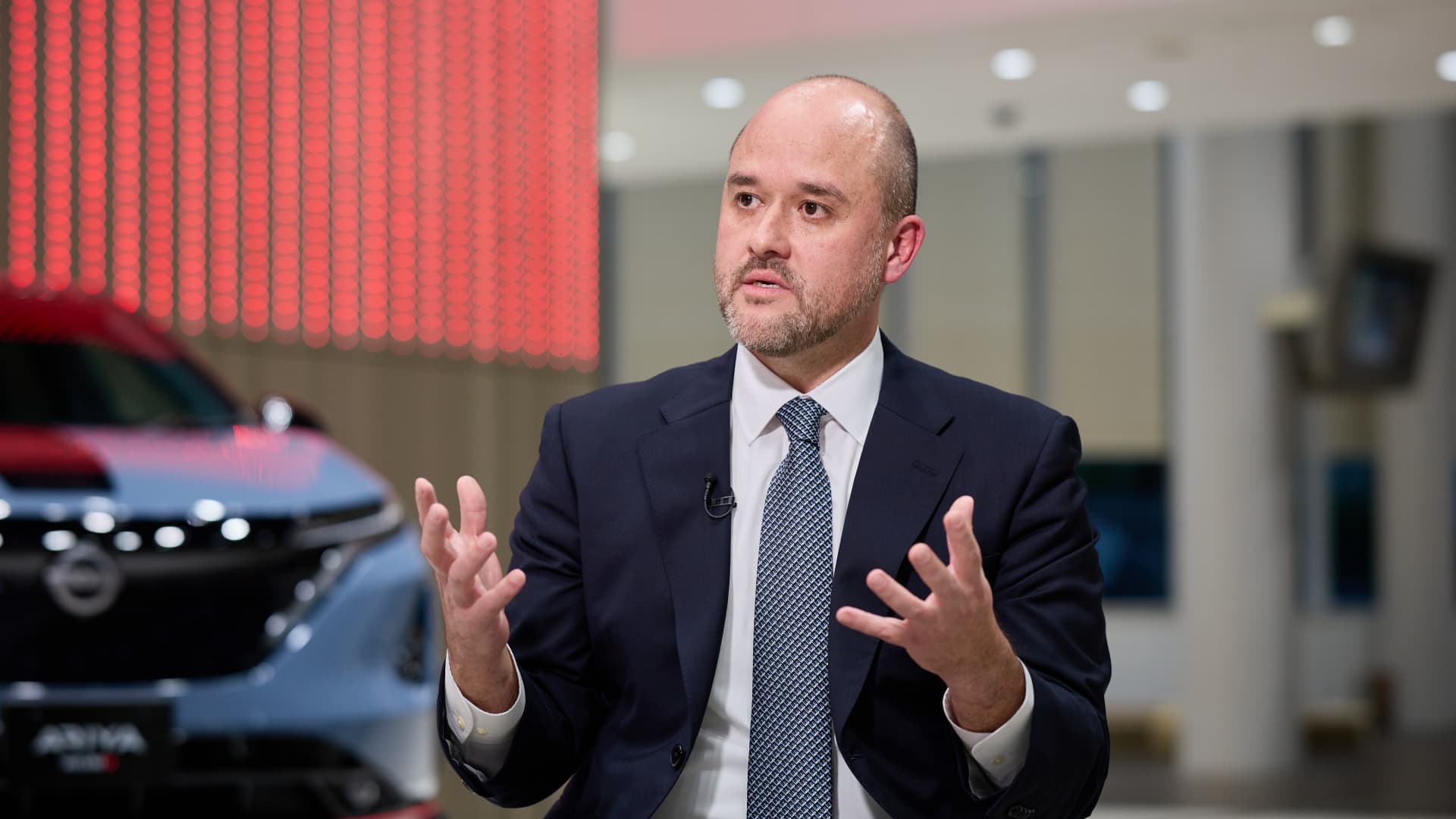If you’ve just taken the top job, Nissan’s new CEO Ivan Espinosa has some advice for you.
Espinosa steps into the role at a turbulent time for the global auto industry — with slowing EV sales, intensifying competition from China, and new tariffs threatening profits.
“Keep the optimism up, because the environment is very tough, and you don’t want to get overwhelmed,” Espinosa told CNBC on Wednesday. “If you get overwhelmed, you can paralyze — and paralysis is not what you need in the current environment. You need to keep moving.”
And it’s not just the auto world. Across sectors, CEOs are under pressure to navigate geopolitical instability, economic uncertainty, and rapid technological change. Many haven’t lasted the course.
CEO departures at U.S. companies surged 38% in December alone, according to data from Challenger, Gray & Christmas, published in January this year. For all of 2024, a record 2,221 chief executives stepped down — the highest number since tracking began in 2002.
Espinosa believes the modern CEO needs to lead with a different mindset. “It’s a very turbulent environment we live in. In the past, some CEOs were very stubborn, very resistant to change. I think now you need to stay open, and stay flexible.”
As the industry shifts, so does its leadership style. “There’s a lot more collaboration,” he adds. “We’re having more open discussions about what we can do together. The context is very unique — geopolitics, supply chain challenges — and sometimes, it’s just not possible to go it alone.”

New class of CEOs
While the past year has seen a record number of CEO departures, it’s also ushered in a fresh wave of leadership. From Boeing and Starbucks to Stellantis and Nike, a new class of chief executives is stepping into the spotlight — and into some of the most challenging business conditions in recent memory.
These leaders are taking the reins amid global uncertainty, geopolitical tensions, and rapid advancements in artificial intelligence. Add to that the growing risks of cybersecurity threats and supply chain disruptions, and the modern CEO’s job description looks more demanding than ever.
Nissan’s Espinosa, took over in April, making him the firm’s fourth CEO in eight years. He has plenty of experience at the Japanese autos giant, where he’s worked since 2003, taking on his first role as a product specialist at the company’s Mexico division, followed by positions in Thailand and Japan.
Despite his extensive experience, Espinosa now has a tough brief: turn around declining sales and fend off intensifying competition from Chinese automakers.
“We need to move quickly. We need to make decisions on the spot. And you need to be comfortable making decisions even when you don’t have 100% of the information available,” Espinosa told CNBC. “It’s better to move and then correct course than just sitting and waiting.”
Shortly after taking the top job, Espinosa unveiled plans to slash 11,000 jobs and shut down seven plants as part of a major restructuring push. But beyond cost cuts, he’s focused on building a cohesive leadership team.
“What you cannot afford in today’s very complex situation is to have a team that doesn’t have the same goals and is not sharing the same objectives,” he said.





